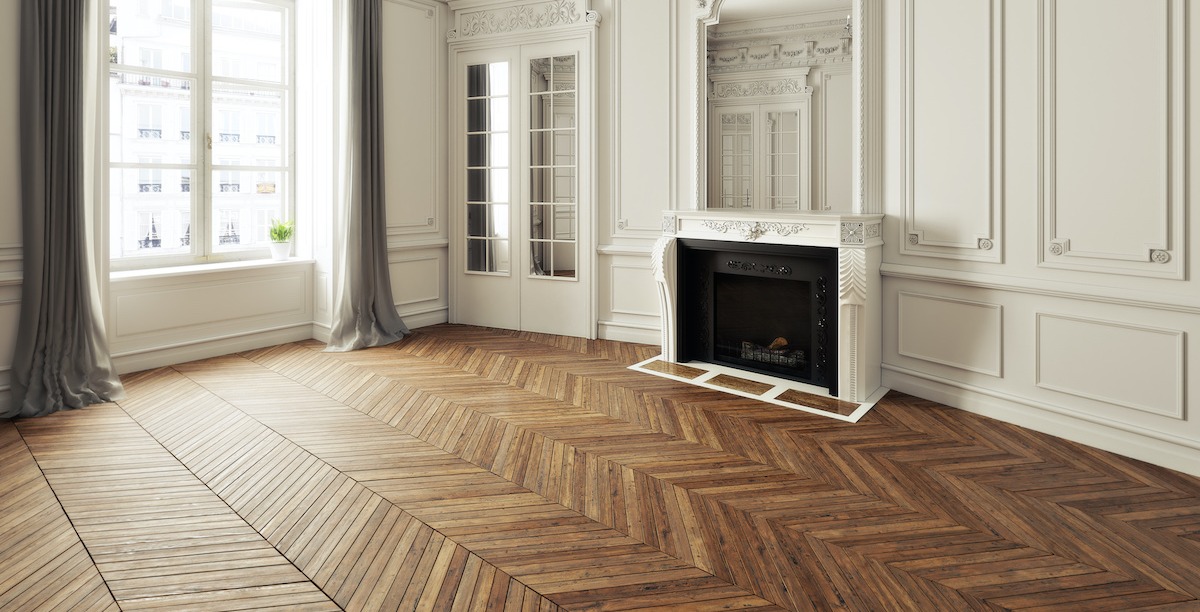Hardwood flooring is a timeless addition to any home, bringing a classic and natural beauty to any interior. With a wide variety of colors and styles, hardwood flooring can be customized to fit any design aesthetic. Not only is it aesthetically pleasing, it is also incredibly durable, adding value to your home and lasting for years to come. This makes it a great investment for any homeowner looking to upgrade their home.
Selecting A Wood Species
When choosing a wood species for authentic wood flooring, there are a few important points to consider. First and foremost, the species of wood will determine the final look and feel of the flooring. Different types of wood can provide different colors, textures, and grain patterns. This can range from the light and airy feel of maple to the dark and sophisticated look of walnut.
Another factor to consider is the durability of the wood species. Hardwoods such as oak, hickory, and walnut are known for their longevity, while softer woods such as pine may not hold up as well over time. It is important to consider the amount of wear and tear the floor will be exposed to in order to choose the best wood species for your flooring.
When selecting a wood species for authentic wood flooring, it is also important to consider the maintenance of the flooring. Some woods require more maintenance than others, such as oiling or sanding. Additionally, some species are more prone to staining and discoloration, making them less ideal for high-traffic areas.
Budget is also an important factor when selecting a wood species for authentic wood flooring. Hardwoods tend to be more expensive than softer woods, but are an excellent option for long-term durability and value. Soft woods such as pine can provide a more affordable option, but may not hold up as well over time.
Uniformity In The Home
When it comes to interior design, consistency is key. Having consistent flooring throughout the home creates a cohesive look that ties the entire space together. Hardwood flooring is an excellent choice for this purpose, as it can be installed in various rooms of the home and still maintain a unified aesthetic. For examples, the flooring color, material, and installation style should be consistent with the specs of other common areas like the living and dining room. Additional access areas like pantries, closets, and elevators in your home should maintain the flow established in the other rooms.
Having hardwood flooring that is consistent throughout the home not only adds to the overall style and design of the space, but also ensures a seamless transition from one room to the next. Instead of having different types of flooring in each room, having a single wood species throughout the entire home creates a uniform look and feel.
Installation Methods And Styles
When it comes to installing hardwood flooring, there are several different renovation methods available. Traditional nail-down installation is the most common and is the preferred method for solid hardwood planks. This involves nailing the planks directly to the subfloor in a staggered pattern.
Another option is glue-down installation, which requires the planks to be glued to the subfloor with a special adhesive. This method is best for engineered hardwood planks and can provide a more secure installation.
Floating installation is another popular option and involves connecting the planks together with a tongue and groove system and then floating them over the subfloor. This is ideal for DIY projects and can provide an even, seamless installation.
When it comes to hardwood flooring styles, there is plenty of variety to choose from. Strip flooring is the most common style and involves planks of uniform width laid in straight, parallel lines. Plank flooring is similar to strip flooring, but the planks are wider and can range in length from a few inches to several feet.
Parquet flooring is a more intricate style and consists of small wooden pieces arranged in geometric patterns. Herringbone is a popular parquet style and features a classic zig-zag pattern, creating a unique and eye-catching look. Handscraped flooring is a rustic-style that consists of planks with a textured surface that resembles wood carved by hand.
Safety Tips For Installation
When installing hardwood floors, safety should always be a priority. The first step is to make sure the area is well-ventilated, as dust and airborne particles can be hazardous. Wear a face mask and safety glasses to protect your lungs and eyes from any loose materials. Additionally, it’s important to make sure you have the proper tools for the job. Use a circular saw or jigsaw to cut planks and a hammer or nail gun to attach them to the subfloor.
It’s also important to take precautions when handling the planks. Wear gloves to protect your hands from splinters or scratches and use a roller to flatten the planks before nailing them down. Additionally, make sure the area is free of any objects or furniture that could get in the way of the installation.
Once the planks are in place, it’s important to inspect the floor for any damage or imperfections. Make sure the planks are secure and use a level to check for any dips or bumps. If the flooring is not level, it can cause problems with the installation process.
When the installation is complete, it’s important to give the floor a thorough cleaning. Vacuum or sweep the area to remove any debris or dust and mop the floor with a mild detergent.
When choosing hardwood flooring for your home, it’s important to consider the various installation methods and styles available and select the one that fits the needs of your specific space.


